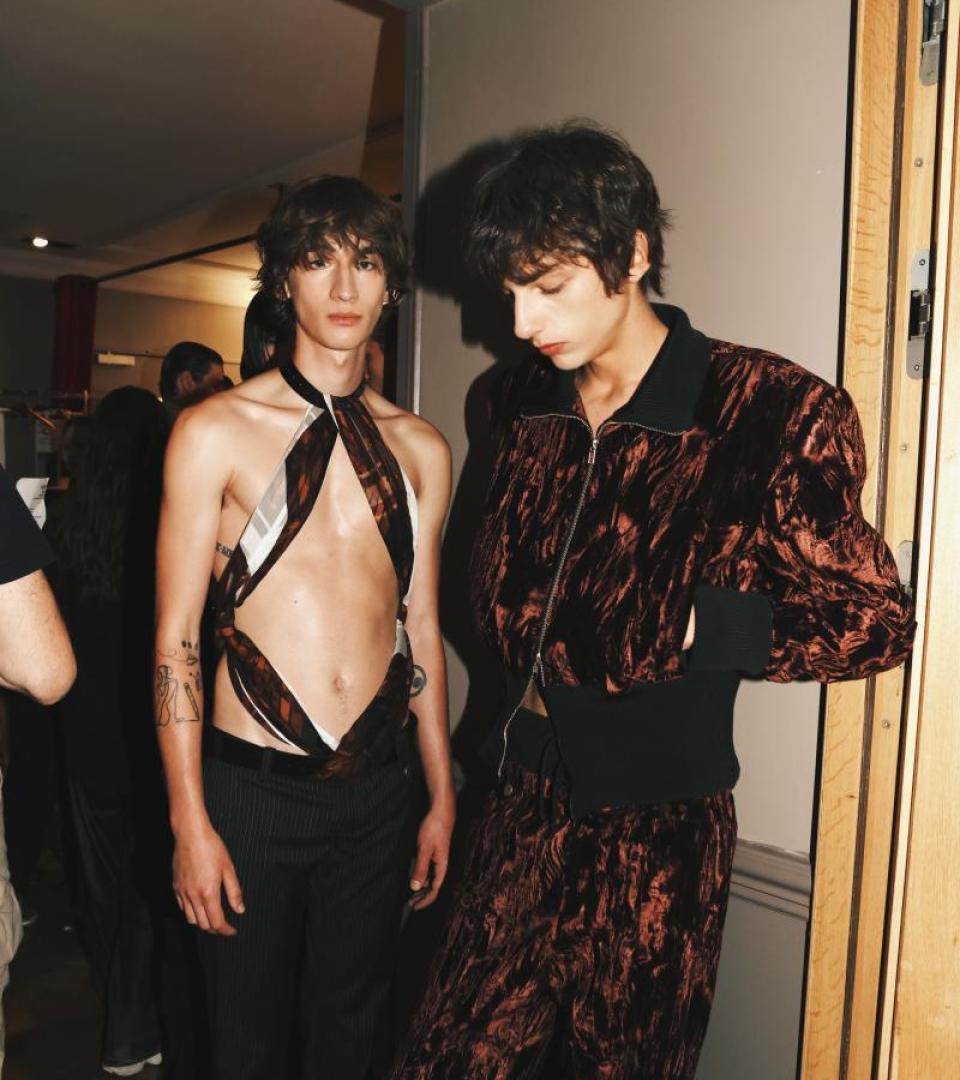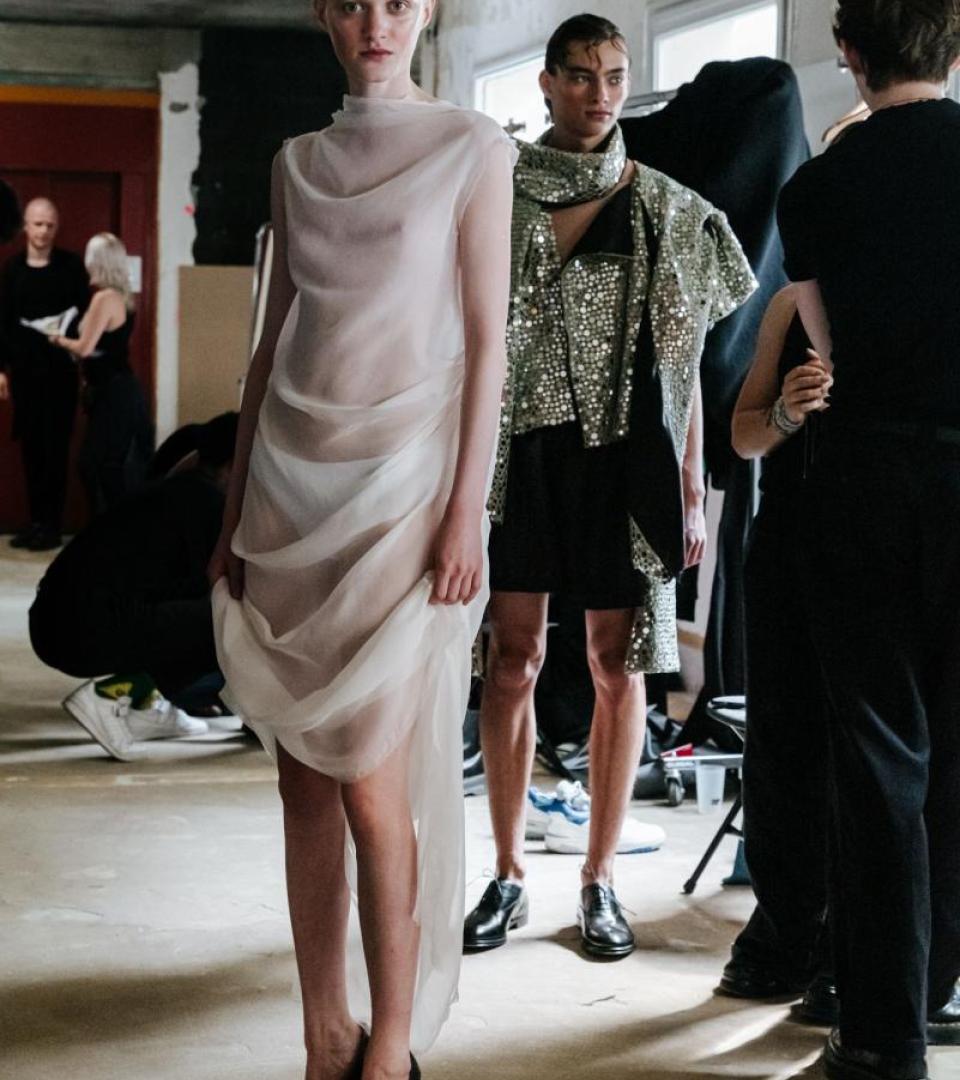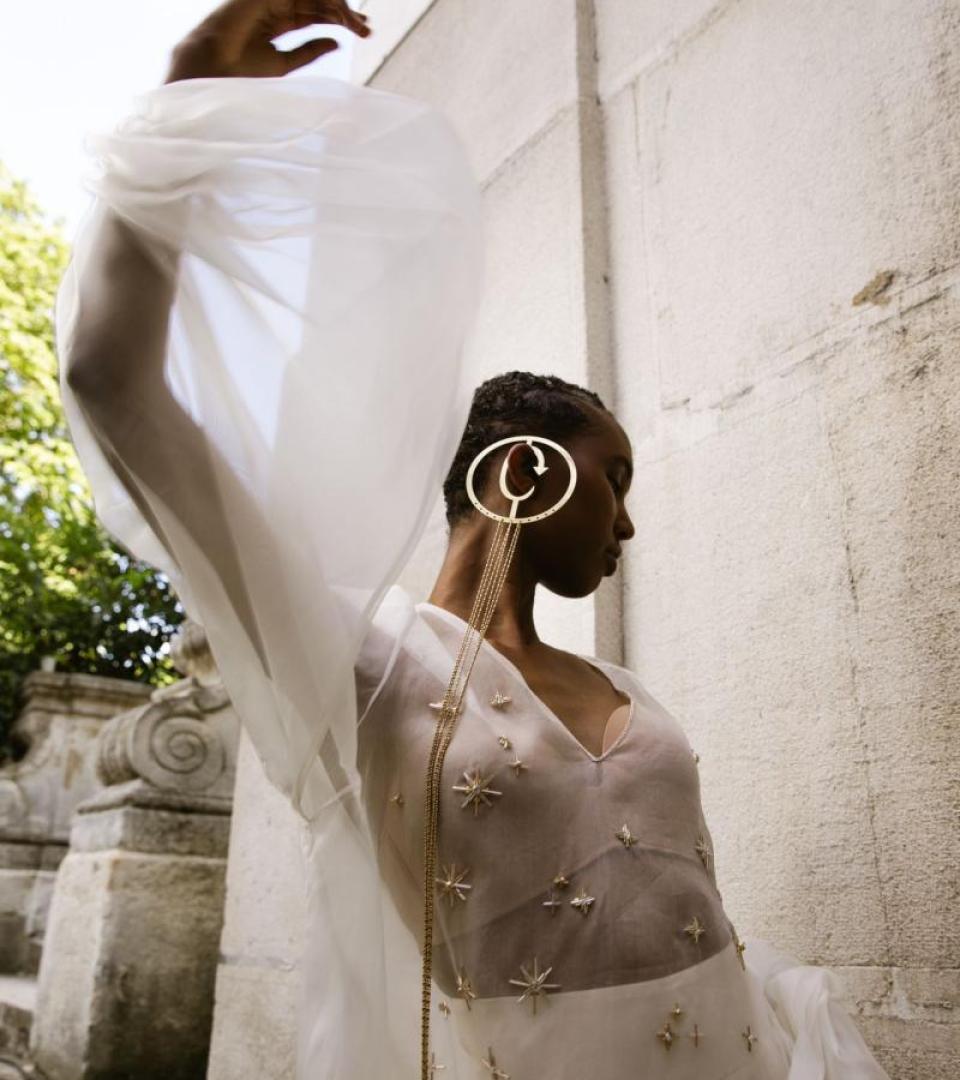Wedding Bells at Meryll Rogge
By Paul McLauchlan.
In May, Belgian designer Meryll Rogge got married in Cadaqués, Spain. While she could have picked any designer under the sun to design her wedding dress, taking the duty upon herself was irresistible. It was, she said over Zoom from her studio outside Antwerp, “freeing.” She channelled these feelings of liberation into her Spring-Summer 2025 collection, indulging in an approach unencumbered by constraints of commerciality.
With the notion of ceremony lingering in her mind, Rogge opted for a more intimate presentation format. With two catwalk shows under her belt, she was missing the connection she fostered with press and buyers from earlier seasons. This week, Jo Indikeu, the Belgian Ambassador, graciously invited her to take appointments, host a cocktail reception, and present an exhibition of the collection’s lookbook, curated by MoMu’s Elisa De Wyngaert, in the gilded enclaves of his private residence at the Embassy.
In the collection, she reflected upon the oeuvre of Cristóbal Balenciaga, and one specific Yves Saint Laurent gown made of patchworked ivory silk ottoman and ivory silk worn by the Duchess of Orléans at her 1969 wedding to the Duke of Orléans. She rendered the latter with contemporary spin: a patchwork of ivory Levi’s 501 denim spliced together into jackets, vests, shirts, and skirts. Additional highlights: custom creased satin gowns garlanded with sequinned daisies (recalling the idea that diamonds are forever) and an opulent wedding gown with tiers of duchesse satin, similar to the one Rogge wore to her wedding. Let’s just say the ethereal ivory organza gown with metal eyelets takes the proverbial wedding cake. “It was important for us to show that a wedding dress can be reinterpreted in a very contemporary way,” said Rogge.
What was the starting point for this collection?
I had a very nice wedding in Cadaqués, Spain in May. It was a great gathering of people. Of course, it took place over a couple of days, and for all of these days, I needed to get dressed. I thought about it for a long time: whether I should buy vintage or ask another designer. But it was irresistible to me to just do it myself with the in-house team. It was a very freeing approach to creating these garments because it’s about what you feel, looking back at some of your favourite pieces, and indulging in the things you would never be able to do in a ready-to-wear collection. There was no mood board involved; it all came from the years and years of references I liked. I started to think if we could do this in another way and that’s how the collection was built.
Do you think the process of designing your own wedding dress made you a freer thinking when it comes to designing for your namesake brand?
Sometimes when you design a collection, things mightn’t fit with the collection, the vibe, or the inspiration, and you might save them for later. Here, we were completely free and didn’t take any of that into consideration. It was also an exercise because I have always wanted to do a black and white collection. But there’s always colour seeping in – I can’t help myself.
How does it feel to be part of a legacy like Paris Fashion Week®?
It’s a huge privilege. We’ve been around for just shy of five years and to be part of this from early on is an honour. Being based in Belgium, we have to choose the fashion week where we would like to present and, obviously, Paris was the first choice for us. The fact that this was reciprocated means a lot.
Do you think being based outside of Paris gives you a sense of freedom when it comes to creating?
It does, but it comes with challenges, too. It would be easier if we had an office in Paris for certain aspects like press or meeting the right connections, but we find solutions to that. We have a lot of press requests that we fulfill as if we were based in Paris. On a creative level, it’s good to be isolated in the sense that you’re not influenced by anything you see. For us, it’s even more extreme because we’re in the countryside and there’s nobody fashionable around. You’re shielded from trends here. It’s quite liberating because I don’t feel pressure that you might be prone to as Parisian brand. We feel the need to create more useful clothes that people will wear everyday while never forgetting about creativity or showing our unique point of view.
This interview has been lightly edited.



